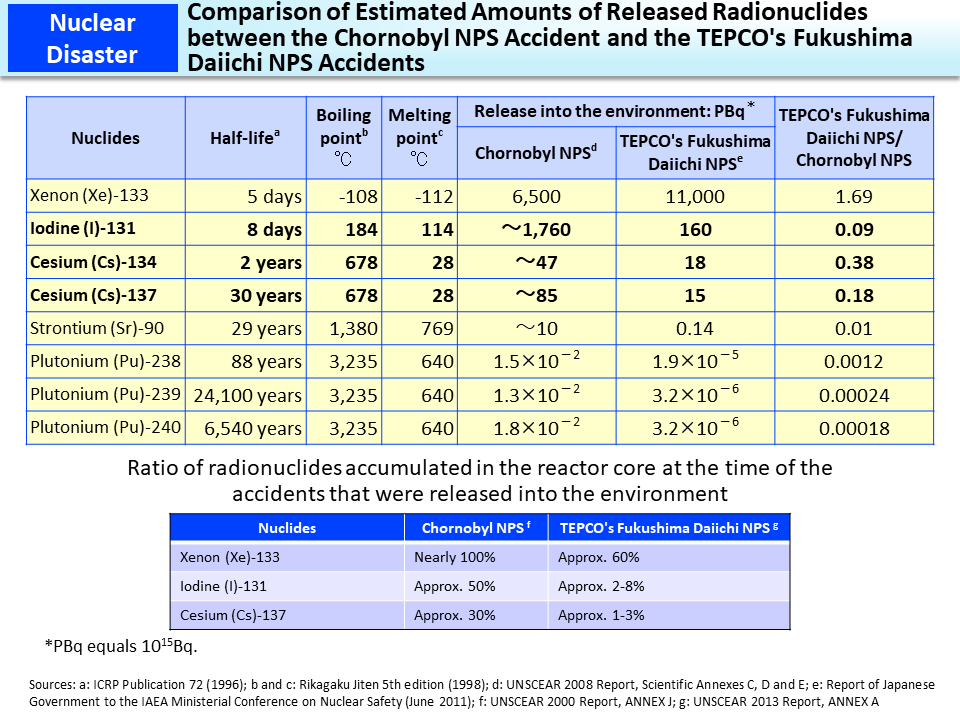Comparison of Estimated Amounts of Released Radionuclides between the Chornobyl NPS Accident and the TEPCO's Fukushima Daiichi NPS Accidents
This table shows a comparison between major radioactive materials released into the environment due to the Chornobyl NPS Accident and the Tokyo Electric Power Company (TEPCO)'s Fukushima Daiichi NPS Accident.
Among them, Cesium-134 and Cesium-137 are the major radionuclides that could pose health threats. The table shows the melting and boiling points of the respective nuclides.
Cesium has a boiling point of 678°C and is therefore in a gaseous state when the nuclear fuel is in a molten state (its melting point is 2,850°C). When cesium in a gaseous state is released into the atmosphere, it goes into a liquid state when the temperature drops below its boiling point, and it further becomes particulate at temperatures below its melting point of 28°C. Thus, cesium is mostly in a particulate form in the atmosphere and will be diffused over wide areas by wind. This was roughly how radioactive cesium was spread to distant areas in the Fukushima Daiichi NPS Accident.
Although it is difficult to directly compare the released amount between the Chornobyl NPS Accident and the Fukushima Daiichi NPS Accident, the larger amount released at the time of the Chornobyl NPS Accident is considered to have been partly due to the fact that the core exploded and was directly exposed to the atmosphere. In contrast, a relatively small amount was released from TEPCO's Fukushima Daiichi NPS as extensive destruction of the containment vessel was barely avoided, and this is considered to have reduced releases of radioactive materials.
However, some noble gases such as Xenon-133 that are easily released into the atmosphere are considered to have been released also from the reactors at TEPCO's Fukushima Daiichi NPS at a high percentage (Fukushima Daiichi NPS: approx. 60%; Chornobyl NPS: up to 100%). The large power capacity (Fukushima Daiichi NPS: total of approx. 2,000,000 kW; Chornobyl NPS: 1,000,000 kW) and the large amount of noble gases remaining in the core at the time of the accident are considered to have caused the release of large amounts of noble gases from TEPCO's Fukushima Daiichi NPS.
- Included in this reference material on March 31, 2017
- Updated on March 31, 2021

